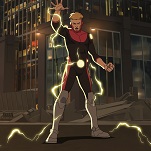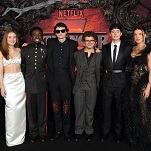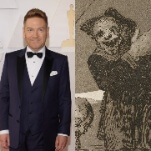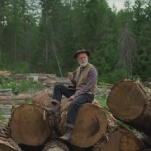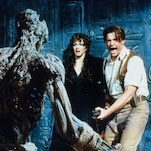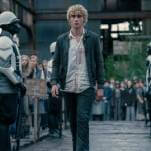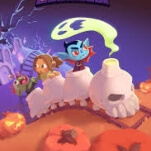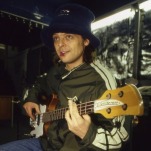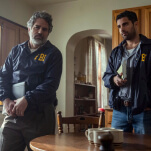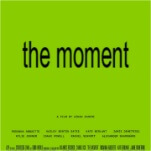Broken Age’s first act is an unsatisfying glimpse of something special
It takes moxie to show off an unfinished work. It’s unlikely that the audience will be satisfied by the piece since it isn’t whole. But maybe they will recognize what is there as quality work, and that the endeavor is on the right track. And that can be a valuable part of a larger process. To play the first act of Broken Age, then, is to become part of that process, as the full game will not be out until later this year. (Buying it means getting the first act now and the second act whenever it is released.) What is available now is half a game—not a short game, not a first episode, but an incomplete game that stops in the middle. It is quality work; it is on the right track. But to play it now is to be put out, to be left wanting more because there’s only a shard of it here, which isn’t enough.
It’s disappointing, because based on what is there, Broken Age could end up being a mighty achievement. It’s an adventure game, the kind where you click on people to talk to them and drag objects onto other objects to solve logic problems and progress in a story. Broken Age contains two whimsical coming-of-age tales, which you can switch between at any time. One is about Shay, a boy who grew from childhood to adolescence alone in a nursery spaceship. The spaceship did not grow up with him, leaving him to play infantile games forever in a candy-colored prison. The other story follows Vella, a teenage girl who lives in a fantasy land terrorized by the immortal monster Mog Chothra. She is to be sacrificed to him, as her culture demands. Shay seeks real adventure, and Vella hopes to not die—and also to kill Mog Chothra, ending the cycle of violence.
There’s a lot of talking in Broken Age, and that dialogue is delivered by interesting characters. (My favorite is Shay’s artificial-intelligence-powered, desperate-for-validation training spoon.) The script is written with wit and verve. The line delivery is expertly handled across the board and directed with comedic precision. Shay, for example, is performed by Elijah Wood, the sad-eyed Peter Pan of screen and stage. He is made to sigh, in a variety of lengths and volumes, at the end of almost every scene. This is correct usage of Elijah Wood.
So it’s a funny game, but it’s also a wistful one, and there’s a quiet heartache in watching Vella and Shay dismantle the lives of their youth. The lovely storybook aesthetic, a unique handmade style that is deeply nostalgic, does a lot to drive the sadness. And the game, for its part, keeps on laughing.

